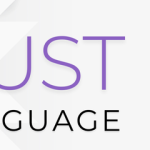Python is one of the most popular programming languages available today. At the time of writing this article, Python is ranked #1 language worldwide. Python is a very easy-to-learn high-level programming language. The first version of Python (i.e. v 0.9.0) was released in 1991 by Guido van Rossum.
Because of its applicability in almost all fields, Python can be compared to shell script as well a C programming language. Python is a real programming language. Python is simple to use, offering much more structure and support for large programs than shell scripts or batch files can offer. On the other hand, Python also offers much more error checking than C, and, being a very high-level language, it has high-level data types built-in, such as flexible arrays and dictionaries. Because of its more general data types, Python is applicable to a much larger problem domain than Awk or even Perl, yet many things are at least as easy in Python as in those languages.
Python allows you to split your program into modules that can be reused in other Python programs. It comes with a large collection of standard modules that you can use as the basis of your programs — or as examples to start learning to program in Python. Some of these modules provide things like file I/O, system calls, sockets, and even interfaces to graphical user interface toolkits like Tk
Python is an interpreted language, which can save you considerable time during program development because no compilation and linking is necessary. The interpreter can be used interactively, which makes it easy to experiment with features of the language, to write throw-away programs, or to test functions during bottom-up program development. Python itself can be used as a handy desk calculator.

Salient features of Python
- Efficient Data Structures
- Dynamically Typed
- Object-Oriented Programming
- Automatic memory management
- Interpreted Language
- Platform Independent
- Free & Open Source
- Embeddable
- Rich Library & Community Support
Companies Using Python: Almost all big companies use Python today in one form or another. Some of the bigger companies that use Python are Google, Amazon, Dropbox, Airbnb, Uber, Docker, Atlassian, Intuit, Github, Netflix etc
Where can we use Python: Python can be used anywhere, some of the important implementations of Python these days are
- Web development: Python can be used to build web applications and websites using frameworks such as Django, Flask, and Pyramid.
- Data analysis and visualization: Python has a wide range of libraries and tools for data analysis, including NumPy, Pandas, and Matplotlib, making it popular in data science and analytics.
- Machine learning and artificial intelligence: Python is widely used for machine learning and artificial intelligence, with popular libraries such as TensorFlow, PyTorch, and Scikit-learn.
- Automation and scripting: Python is often used for automating repetitive tasks, such as testing, deployment, and data processing.
- Scientific computing: Python is used extensively in scientific computing, with libraries such as SciPy, SymPy, and Astropy.
- Game development: Python can be used to develop games using libraries such as Pygame and PyOpenGL.
- Desktop applications: Python can be used to build desktop applications using frameworks such as PyQt and wxPython.
The codes (if any) mentioned in this post can be downloaded from github.com. Share the post with someone you think can benefit from the information





